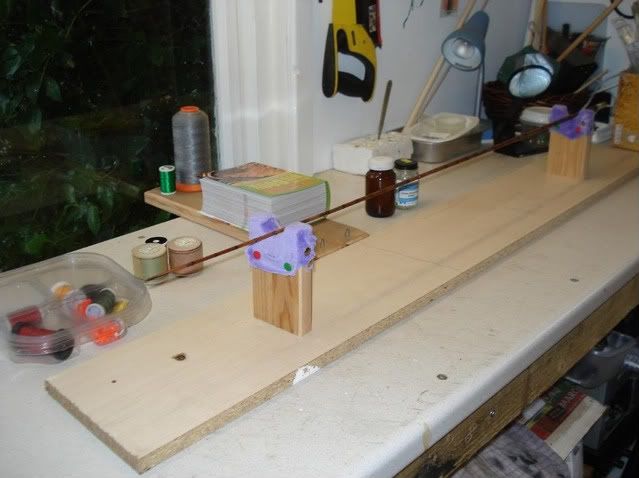It depends if you are going to do a sympathetic restorsation, Sean. The original Wizard was whipped in bright red silk, and simply doped and varnished.
It helps to thin the dope with cellulose thinners to get a good penetration, though I know of others using French Polish with very good results.
I personally finish with a few coats of Blackfriar Super yacht Varnish.
....................
If you would like to do something more modern and higher quality then the sky is the limit. I don't like the H&H sealer..it is just thinned down PVA anyway, and doesn't do a very good job, too.
Using two-pack resins is tricky, because you need to turn the rod section to evenly distribute the resin...even then you will get a tear effect that a good builder will spot...you need to alternate the direction of rotation to avoid this.
A pal of mine has developed a rod turner to do this. You simply touch the rod section and the motor reverses!

I use a home made whipping station that I addded a 'ballroom glitter ball' motor to, from Tandy for £10.
I've not used proper resin from H&H and the like but did get a good result of a carbon float rod using two-pack resin from a modellers shop.
You need to mix it for twice as long as you think and don't lift your mixing tool from the pallet, it's the only way to avoid bubbles. It will go streaky, then opaque, then clear...only now is it ready to use. A 12 minute setting resin still seems to take 20 minutes to set, though and goes runnier as it warms up, naturally from the chemical reaction.
If you find it is setting miss-shapen you can get it runny again briefly by heating it up with a small angle-poise lamp.
You can see why most people go the thinners and varnish route



Here is the whipping station, pre motorisation, complete with lilac velvet from the Wife's dressing gown. She hasn't noticed yet.The big fat vegetarian cookbook is the silk tensioning system, but it's coated pages mean I still have to put a weight on top sometimes. Something of a work in progress.




